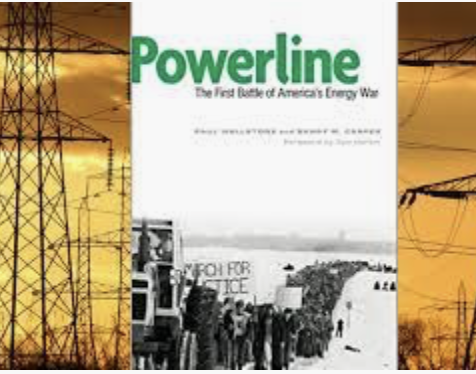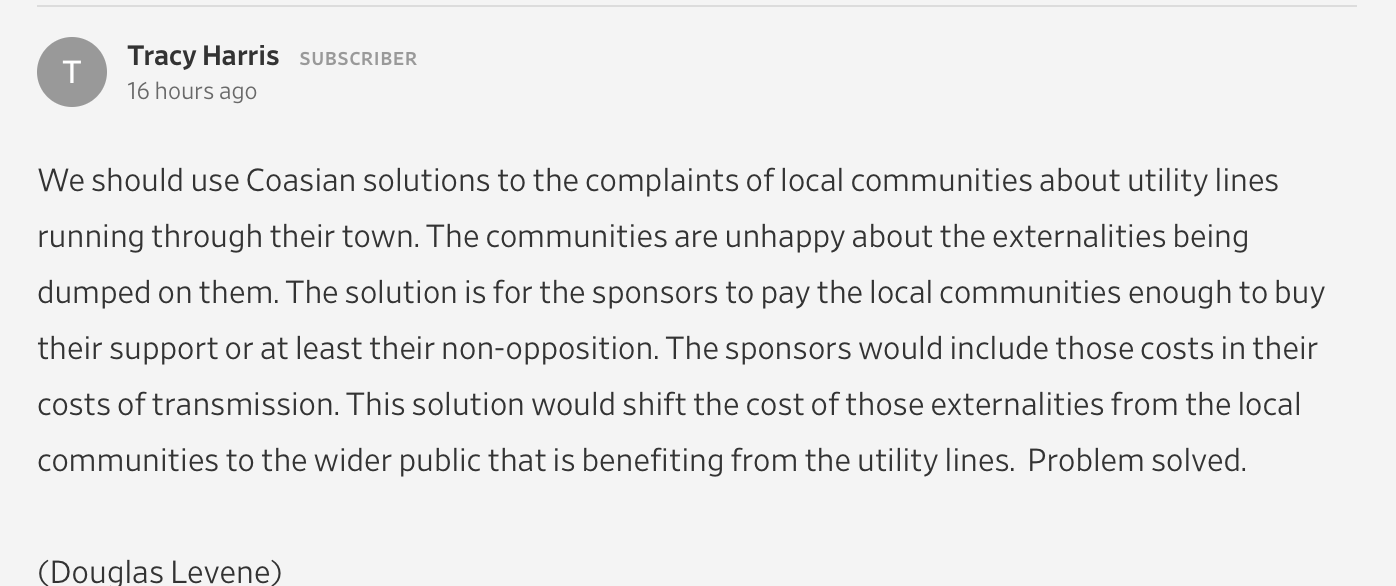We saw these same arrogant suggestions in comments on FERC's transmission planning rulemaking recently. But we fought back. Now they're taking their arrogance to the media. Well, sort of media... as if we can take biased "Climate News" as any kind of real media.
According to these arrogant shysters, a brand new "investigation" reveals the answer to transmission siting was determined 50 years ago. They are now promoting a 1970's transmission line siting battle as the answer to contemporary transmission opposition. Their "investigation" supposedly reveals that the only mistake made in that battle was not notifying affected landowners early enough in the process. The take away is supposed to be if today's transmission developers engage with landowners early in the process that opposition can be avoided.
One of the lessons was that power companies need to engage the public early and be willing to change course in the face of well-reasoned criticism, as opposed to ramming through a project.
Transmission opposition to overhead lines on new rights of way is going to happen. There is no way to avoid it. Pretending a 50-year old battle holds the key to today's transmission opposition is nothing more than creative fantasy. Perhaps they should spend more time studying today's opposition. If they did, perhaps they'd realize that we've come a long way, baby. What happened with the PATH project? The Monmouth County Reliability project? SWEPCO's Kings River project? AEP's Windcatcher? Transource's Independence Energy Connection? New England Clean Energy Connect? Cardinal Hickory Creek? All the Clean Line Energy projects? I'm probably forgetting a few, and for that I apologize. The cancellations of hotly opposed Big Transmission projects over the past decade have been too numerous to rattle off the top of my head. (Somewhere I have a list that I prepared several years ago for an event where I was speaking... somewhere I can't put my finger on right now.) What would happen if someone studied all these cancelled projects to find the common denominator? I suppose it would depend on who does the study. But the only ones who can arrive at the right answer are the transmission opposition groups who won the cancellations. Collectively, I'd say that the common denominator is overhead transmission on new rights of way. If you poke a stick into the lion's cage, you're going to piss off the lion.
Maybe the solution is not to engage the lion in the first place. How can transmission developers do this? Buried transmission on existing rights of way. As the developers of the SOO Green project have proven, if you don't create new rights of way using eminent domain, the lion simply doesn't care all that much. SOO Green has found the secret sauce...
...new transmission can be sited and routed with broad support from the public and the communities most impacted by it.
Power companies can reduce conflict by building transmission lines in existing corridors, like along highways and railroads, but those options can be more complicated and costly.
One of the first things a community does when notified of a new transmission proposal is find a way to shift it elsewhere. Sorry, it's just the knee jerk reaction. However, in all successful opposition groups realization of the true enemy (transmission company) quickly follows. Then attention may shift to ways to mitigate the impact upon their collective group. Burial is a favorite. Out of sight, out of mind. However, because transmission projects are always presented as fully formed ideas, the developer will always try to shut that idea down because it's not in their plans. Excuses are usually cost, with a promise that if the community pays the extra (estimated at 10 times the cost), then the project can be buried. That's no mitigation offer. It's a dead end. And why should a community pay to mitigate the impacts of a project from which they will not benefit? This also applies to crazy ideas to financially bribe local communities to accept impacts. When ratepayers are picking up the tab for the project, that community will be paying to bribe themselves! And why is it that financial bribes should be the responsibility of beneficiaries in other areas, while the cost of burying the project and not incurring the impacts of the project in the first place gets left on the doorstep of the affected community? This is not logical... at all. Transmission developers also whine that buried projects are harder to maintain and faults are unable to be seen, leading to longer repair times. WRONG! Buried projects are completely unaffected by weather, fire, sabotage, and accident. They fail less often. But when they do, modern technology can pinpoint the location of the fault to a very small section of line, which can be accessed for repair via regularly spaced maintenance vaults. Underground transmission is designed to provide for easy detection and repair of faults.
Oh boy... how did I get so far afield? I've got things to do today, other than this blog. Let's cut to the chase here...
These arrogant greedsters will continue to push their narrative that only a boot on the neck of rural America can usher in a renewable energy future. Instead of working with rural America to find a solution, these folks continue to push for more authority to simply take what they want. Case in point... I emailed the author of this piece 2 days ago. No response. They don't want to find an acceptable solution. They just want more power to control the lives and land of folks in rural places by pretending they know what you want.
Ultimately, it will fail. Whether it's quickly, courtesy of those who thoughtfully make public policy, or in a long slog punctuated by protests and violence reminiscent of the 1970's, is up to them.
We have a voice, and we will continue to use it.





 RSS Feed
RSS Feed